Podcast: Play in new window | Download
Awesome Fall Garden Plants – Show Notes
Fall is a beautiful time! Celebrate the season in your yard with beautiful plants that bring beautiful color and interest to your yard! We highlight fall trees and fall perennials with awesome bursts of color for your yard.
Today’s links: ely.how/episode86
- Goldenrod (Solidago spp)
- New England Aster (Symphyotrichum novae-angliae)
- Oak Leaf Hydrangea (Hydrangea quercifolia)
- Serviceberry (Amelanchier spp)
- Red Maple (Acer rubrum)
- Ask Ben a Question for Free!
- Find me on Facebook, Instagram, or Pinterest
Awesome fall garden plants
- Plan for year-round beauty in your yard
- Most plants can offer multiple season interest
- Texture
- Color
- Form
- Shape
-
Awesome Fall perennials
-
Goldenrod (Solidago spp)
- Full sun
- Great in groups, naturalized areas
- 1 to 5 feet tall depending on species and cultivar
-
New England Aster (Symphyotrichum novae-angliae)
- USDA Zone 5 to 8
- Sun
- Moisture: average to moist
- Fertility: average to high
- 1 to 3 feet tall
- Beautiful fall flowers
- Varieties
- ‘Purple Dome’
-
-
Awesome Fall Shrubs
-
Oak Leaf Hydrangea (Hydrangea quercifolia)
- 6-8ft height and width
- USDA zones 5-9
- Struggles in harsh winters below -10F
- Likes occasional moisture through drought summers
- Likes richer soils, tolerates low fertility
- Full sun to part shade
-
-
Awesome Fall Trees
-
Serviceberry (Amelanchier spp)
- 25-30ft tall, 15-20ft wide
- USDA zones 4-8 (varies with species)
- Tolerates wide range of soils and moisture
- Full sun to part shade
-
Red Maple (Acer rubrum)
- Large tree – up to 70ft
- Zones 3-9
- Full sun to part shade
- Medium to moist soil
- Beautiful red and orange fall foliage
- Varieties
- Autumn Flame – Smaller leaves, scarlet color
- October Glory – Orange to red color
- Autumn Blaze – beware!
-
Are you ready to free yourself from your yard work routine?
Confidently transform your landscape
with the Easy Living Yards Membership!
Awesome Fall Garden Plants-ELY086
00:00:00 – 00:05:17
What’s up. I’m Ben Hale and this is the easy living yards podcast. Creating Beautiful Yard should be easy. Let’s jump in in create the Dream Yard. You deserve so you can enjoy more time doing what you love. welcome to episode eighty six of easy living yards podcast cast today. We’ve got a great one as usual we’re jumping into fall here and so I wanNA talk about Great Foal Garden plants just highlighting a couple plants plants. There’s so many plants out there right and so really some of these shows really what I WANNA do is start my excitement about all these plants and talking about so many different plants and really distill it down to just a couple of plants that can really make a difference for you in your landscape so we’re going to talk about a couple of plants that are beautiful in and fall different structures different types of plants that sort of thing before we jump into that. I want to just highlight for you that you can always asked me a question. If you go over to easy living yards dot com slash ask. Usually I got caught up here. Because usually I talk about you can go to a different but I created this new. Ask Page right so you don’t even have to click a button. I was about to say you just click the button right there right so my podcast page page. There’s also a button to clink but right now I want to direct you to the right page. The new page easy living yards dot com slash ask. You don’t even have to click a button or anything right. There is a form you can fill out to reach out to me directly. I don’t have anybody you know serving. His intermediate here is just me and you so you can get directly in touch with me and ask me a question to get help with your landscape. I Really WanNa make a positive difference for you and everybody listening into this show in in our landscapes so we can make a positive change in our lives as well as a positive change in the world. That really sinks home for me guys. This is not something I just kind of make up just a sound warm and fuzzy. I really think the Morbus that make a positive difference in our lives through our landscape. The reader reader change. We can make overall so that’s really important to me and this is one small way. It’s absolutely free to just reach out to me and ask me a quick question and and I want to help make a positive change in your landscape so this is also to help Kinda. Give you a little nudge a little kick in the pants to actually start making a change right. We we think about it. We talk about it or we ponder about it so much about making change but actually making change is different and so I really WanNa make this is easy easy as possible for you to begin making positive change in your landscape so that’s why I have this. Ask Function yes. It takes me a lot of time to answer people but it’s really really meaningful to me. It’s it’s not like it’s a it takes away from my my life. It actually is something that makes me feel. Good reaching out to you guys talking with you directly so so if you want to get in touch with me again go over to easy living yards dot com slash ask. There’s a super simple form there. You fill out with few details about where you live so I can help. Give you the right information about plants or whether or climate as well as a specific details about your question. That’s it guys all right so let’s jump in today’s show which is about great plants for your fall garden so you can have beauty in your landscape in the fall. Okay fall color is amazing. All right fall is beautiful. I love fall for that reason the only part I don’t like about follows I know winter’s coming afterward which after try a little bit harder to love. I love my yard in the winter. I’ll be honest okay so when it comes to fall though this is part of planning for year round beauty right a lot of time we get to the garden center in the spring. We’re super excited about spring and we’re trying to pick out all these different flowers right that are bursting with color and then we throw him in our yard and and then we don’t have color for very long they stopped blooming and they’re wondering what’s next what we do next right if you’ve ever had that feeling you’re not addle on okay so planning for year. Round interest is is exactly that it’s a planning process. It’s not something you go to the Garden Center and just pop assum plant in the ground and it’s magically a beautiful garden. All you ran this takes a little bit of planning a little bit of foresight and a little bit of work and a little bit of knowledge a two and so today. I want to talk about those plants that specifically have beauty in the fall okay and coming up again. I talked about plants as well well in previous shows in different seasons how to have beauty in different and I’ll continue to do so because this is a really important topic having plants that are beautiful in the winter in the spring and the summer in the fall in just having whether it’s blooms or something else having some sort of beauty that draws you out into the landscape that makes you proud love your space without having to take time working on as well right so that’s what we talk about okay so we want to plan for year.
00:05:17 – 00:10:30
Round beauty most host plants can offer multiple seasons of interest as well so think of plants when you’re planning your landscape of plants that can offer you not only a a bloom at a specific time of year but maybe they also provide some sort of structural interest based on how you planted or where you planted or they have some sort of texture sure or form or shape or color to some other part of the plant as well so they could have interesting leaves are fully addressed the way the leads are shaped the La- The way the leaves are colored can provide interest the way they interact with the wind right they could move in the wind so these are all factors is to consider outside of your typical consideration of flowering okay so let’s just dive in. I’ve got a couple of plants that tried to keep the list pretty limited so I’ve got here’s what I’ve got. I’ve got to perennial plants that are just perennials which basically just means the top Steinbeck in each year but they’re are still alive underground so they come back each year from the ground. that’s ovation. Perennial is typically. You Know Your perennials that you buy flats flats or whatever the the garden centers another way to think about that Orrin smallpox. I’ve got one shrub into trees as well so again tried to keep the list pretty limited so we’ve got five plans nice to talk about today. Let’s dive in one of my favorites. Guys is a weed. It’s a we’d all right. This is Golden Rod. Goldenrod is a beautiful plant and right now as I’m recording. This is just starting to pop into bloom in our landscape. We have a naturalized space. Where it’s we have I believe it’s Tall Goldenrod. There’s so many different species of Goldenrod is I’m talking about just the genus the grouping of golden rods such beautiful plants toward the end this summer the Herald in fall and so they have such beautiful golden bright color that brings in this last pop of summer late summer in and through early fall they have such a beautiful bloom and so there’s the genus of Goldenrod is called Sala Dago and I have link for all all these plants in the show notes guys check out the show notes as well and you can go over to the episode web pages while to have more in depth notes there as well so easy living living yards dot com slash episode eighty six is where the web pages for this show so goldenrod is basically. It’s a plant that it generally speaking most of them grow. It’s a single stem so you plant them kind of clumped into groups and come late summer they pop into color on top with these beautiful flower stocks that kind of look like little bursts of fireworks so they look great and groups great naturalized naturalized areas but also some of the cultivars look beautiful in your garden as well so don’t forget about placing them in your more fancier cultivated garden space right out front. We planted some some goldenrod. It’s cultivar called crown of raise and it’s a it’s a more rare cultivar Var. Actually it was tough for me to find it so hesitant to even share that on the show but basically there’s there’s some beautiful golden rats out there that the there’s cultivars as well as just the straight species so for free background if you’re not familiar with what a Cultivar is a Cultivar is a selected variety of of plant and so it’s selected by nursery tradespeople for color or form or consistency or something like that and then it’s kind of labeled with a cultivar name so you know what you’re getting basically okay so goldenrod full sun grows. I wanted to five feet tall depending upon species and CULTIVAR. The one we have in our garden is a really low growing one and it gets these little bursts of fireworks on them in late fall. It’s still yet to bloom and we actually I. I’ve got a mystery one as well that we planted and it bloomed already. It’s it was beautiful but it was different sprint and so it was kind of funny that somehow with the nursery a we got a different CULTIVAR that grew real beautiful as well in already ready went through its bloom cycle all right so goldenrod. Check them out now. I I mentioned there. We’d right well. It’s funny enough things we consider weeds here here in the US just because they also grow in roadside ditches doesn’t mean they’re not beautiful in the garden and now this plant can spread if you if you get one. That’s a little a little bit more feisty or aggressive so just be careful make sure you read up on it and and whether it has a tendency to spread or if it’s in a space that’s okay hey for that so I wanted to warn with that and depending upon your species or Cultivar Chan kind of factors into that as well now what I said about the weed thing is is in Europe his prized beautiful specimen plants in the garden so it’s all depending on perspective right so here.
00:10:30 – 00:15:07
It’s a weed but that’s just based on the conventional mindset. It’s such a beautiful plant in the garden so check it out all right next. One is the New England Aster Astor’s. There’s there’s something that’s not unfamiliar to a lot of people now specifically. I’m highlighting the New England aster that’s because I have a tendency to prefer natives natives over non native plants. There’s a ton of Chinese astor’s that are perfectly beautiful as well so you can go check those out as well but if you want something that provides is a wonderful habitat source wonderful nectar plant the New England aster is beautiful in its own right so the the Latin name for this this get ready for it is Scipio tricalm Nova Anglia. That’s right. It’s a mouthful but it’s a wonderful plant and so the New England Aster AH IT GROWS IN USDA zones five to eight it prefers full sun average to moist soil but this thing can do well in pretty dry soils as well I I would say and then prefers average fertility as well so it does like a little bit of fertility but it doesn’t grow in bare rock basically but it doesn’t need I need you know the the best garden soil in the world now if it does it’ll do just fine grows one to three feet tall and it has beautiful fall flowers. We also have this plant in our front garden bed and it’s just starting to come in bloom. It’s just a hair behind the golden rods and it looks beautiful. There’s deep so we have a variety called Purple Dome so there’s a cultivar out there of the native New England Aster called Purple Dumb if you’re looking in the nursery for this specifically for the native if it’s just called an aster most likely it’s a Chinese astor if it says Astor Nova ugly so after his the old genus name and it got split up the original Chinese one’s stuck with the name aster and the North American wants got split into the easy easy pro easy to pronounce name Scipio track them now in the nurseries a lot of them still use the old name so you might see it under the the Latin name Aster Novi Anglais if you have that it’s a New England aster beautiful plants and a native plant to the United States which she’s wonderful so again we have purple dome. It looks awesome. It’s these deep deep Purple Beautiful Fall Flowers and so they’re selected for interested a little bit of a deeper purple than the the straight species the straight species as well as beautiful in the garden so if you prefer straight species it will also look beautiful now. This guy does have a tendency to spread especially the species so it’s something you consider again if you don’t don’t like beautiful fall purple flowers all over your garden that you might have to trim it back of course that’s a little tongue in cheek right so it really for me. I’m okay okay with this. Guy Spreading a little bit and if you have to be out there every once in a while just to kind of pull things out or or prune it back or whatever that’s fine too okay. Let’s move on so for shrubs. I have one shrub highlight. Which is the Oak Leaf Hydrangea. This is again has with all the plants. I’m highlighting today. Guys these are they’re beautiful. Native plants all right. I you know I don’t necessarily always say their native. I because I want to highlight how beautiful they are first right right. We’re talking about plants here and so it’s when you’re talking about plants. Most people care more about the beauty about where they’re from but also want to highlight these are beautiful plants lance that have grown in our own backyards which is awesome okay so the oak leaf hydrangea. The Latin name is Hydrangea quercus full IAEA which the Latin name just means leaves of Oak so oak leaf right and the reason. I list all these Latin named for you. Guys is so we can no. We’re talking about the same plant because a lot of plants have multiple common names that refer to different plants or the same plant have multiple comment as well all right so the Oakley hydrangea grows about sixty eight feet tall about sixty eight feet wide so if you’re planning this in a front garden bed make sure it’s not right in front of a window or something like that or right next to your porch. Make sure this guy has room to grow it prefers. USDA zones five to nine five is kind of pushing it actually it does struggle in harsh winters below minus ten and so that’s your zone five right.
00:15:07 – 00:20:30
There is is down to think minus fifteen fifteen zone five so in those harsh winters. You do kind of have to make sure it’s there’s a little bit of mulch protecting the base of it protecting those routes is every once in a while in those harsh winters at dies back to the ground but it will come right back so it’s not really the worst thing in the world if that happens this guy does like some occasional moisture through super dry summers but it’s severely drought tolerant but it’s a little you know he likes a little bit of care as well so it does like richer soils but at the same time if you have low fertility might do as well so basically what I’m saying is there’s certain things as plant likes but it doesn’t mean that it can’t survive without it and so if you if you have a little bit of neglect in the kindest way possible right it it still might do okay and your landscape now. This does prefer full sun to part shade. I don’t really have any plants plants that are highlighted here for full shade nothing comes to mind specifically if I’m thinking about fall color and so for the two or basis perennials I think there there might be a golden router to that grows well in the shade. there is a astor. A native astor called the Let’s see October October. Skies is the CULTIVAR. I’m thinking about. It’s the Sin Cynthia tricalm. AB- long on a full eum right they make him so easy to pronounce that’s an asset that grows in in the shade but it blooms a little bit earlier so you don’t get the fall bloom as much. I’m getting off topic here but what I’m saying is. I don’t know if I have a whole lot of suggestions for fool shade. So if you guys have full shade hand you want fall color. that might be a bit of a stretch. I’ll try and think about some reach out to me and ask and I’ll try and come up with some answers for you. There might be some cool ferns that kind of look cool in the fall that we can look into okay so back to you said enough about the oak leaf hydrangea. It’s a beautiful shrub are natives are our neighbors have at growing in their front landscape and IT Looks Beautiful Utah and it does get this kind of deep beautiful fall color to it as well as of course those those wonderful flower panicles that hydrogens are known for It’s not the big Snow Globes that you see on some of the ridiculously big ones but it has these they’re kind of almost like a cone shape of flowers and they look beautiful in their own right okay. Let’s move onto some trees so for trees. the first one is one of my favorite’s really both these trees are my favorites but the first one I wanNA highlight is a medium sized tree called the service Berry. The Service Berry again is a native eight of plant to the US is such beautiful tree. This is truly to me a year round interest tree it starts with these beautiful beautiful white flowers and the early early spring so you get this burst of white color on these branches looks looks really pretty and following in usually first week of June around zone six where I live in southwestern. Ohio is sets with fruit and so you have this wonderful buzz of activity with the pollinators in early spring with the white flowers so not only. Is it a beautiful beautiful tree but it’s it’s it’s full of activity and you the the insects love it and then you get this beautiful fruit set that also is beautiful with these deep. They essentially look like blueberries. These deep purplish blue berries the hang on the tree. They look like blueberries even an almost taste like blueberries to their edible able they’re wonderful and the birds love them too so then it brings in the birds right and so you have this beautiful bursts of activity in there in the spring through over the summer with all the fruits and the flowers and then you have this wonderful foliage through this summer followed by this burst of beautiful fiery orange and yellow in the fall and that’s where the service berry just really just kind of goes above and beyond as when it folds is up with this fall color and then it ends in the summer we already went through the summer it ends in the winter with just this wonderful structural sure accident to the landscape with it’s crazy whiny twisty branches in this wide branching pattern looks really interesting as well so you just have this full year of interest with the street now the tree it is a tree occurs twenty five to thirty feet tall so you’re talking a medium tree. It’s native to or it’s adapted to edge ecosystems so grows on the edge of forests in these open meadow areas where it doesn’t get huge because it’s dominated by Oaks and Maples and beeches and Hickories and all those other chestnuts and all this other trees that it evolved with so twenty five to thirty feet tall fifteen to twenty feet wide wide grows so I’m primarily talking about the the Canadian Service Berry so Amil Answer.
00:20:30 – 00:25:19
The answer is the genus the species is Canada’s but there’s a ton of other species as well but what I’m talking about the factoid here i. I looked up the details of Canada’s so. USDA zones four to eight is the Kansas species but you have service berries that are native to all of the United States most Yousef candidate. I think parts of Mexico too so wide range of adaptability look up for this species and cultivars. If you want specific cultivar look for the ones that are adapted adapted to your region. There’s also ones that I believe are native to places on the west side of the rockies as well so it tolerates a wide range just soil moisture as well as grows in full sun to part shade so service. Berry check it out can’t say enough good things about it except that that well this one one drawback is if you start with a really tiny baby one like I have it and watch out for the rabbits and the deer because they love them and it’s GonNa struggle getting a tall enough. It’s just slowly starting to take on to its own where it’s getting a little bit of growth ahead to cage in and for a couple of years and it slowly starting to come back so anyway just make sure it’s protected if it’s a real tiny baby but other than that such a beautiful plan to have in the landscape okay okay move on our last plant is getting big. Now is the red maple okay. Guys I love the Red Maple is so common around where I live in southern Ohio but it’s so beautiful as well such a wonderful tree awesome summer shade big arching branches so if you have space for large tree we consider a red maple now red maple. I recommend over a very popular landscape. Plan was previously the silver maple which causes causes massive problems in the landscape grows really fast which is why it was preferred but the downside is shoots out these giant surface routes that go way out horizontally and cause problems with sidewalks driveways and foundations okay. You don’t want that likewise the tree itself as very softwoods so it’s prone to splitting once it gets older. The Red Maple is a little bit. Tamer on all of those regards. You Still WanNa make sure it has plenty of space so I’m talking implant. thirty-five feet from your foundation from your driveway is what I recommend because you want to avoid the potential for for some of these problems still in some areas the red maple can grow surface routes not as aggressively as far as the silver maple but also also. It’s such a just a much more beautiful tree. The only downside is it grows a little bit slower but this is still for for the size of the tree. It’s a very fast growing tree so we’re talking a tree that grows at mature size up to seventy feet or more and it grows in USDA zones three two nine so widely adapted tree across most the United States grows in full sun to part shade medium to moist soil tolerates drought at the same time and beautiful red and orange fall foliage can’t say enough about the beautiful color of the tree. there are some varieties. I want to highlight so the autumn flame tree is a beautiful so these varieties are bred for their specifically for their fall color If you want a specific cultivar the street species is it’s hard to beat as well so the autumn flame tree has slightly smaller leaves and more scarlet color to it so if you want that check out the autumn. Autumn Flame October glory is more of an orange to red color. I’m kind of partial for the orange and red ones not gonNA lie So October glorious beautiful as well. I want to warn you about autumn blaze. Autumn blaze is a as far as I understand. This is a cross species bread tree so it has some of those silver maple characteristics in it was bred to grow faster in the landscape but at the same time you have those those softer wood issues as well as the surface issues so watch out for autumn blaze. Unfortunately there’s so much similarity to the CULTIVAR names right you have autumn flame which scarlet tree with smaller leaves his Red Maple October glory also a red maple that has orange to red fall color then you have autumn blades which I don’t recommend which as far as I understand is a cross of the Red Maple and the silver maple species and and has some negative characteristics is to it all right guys so that’s a wrap for today’s show I hope you consider some of these plans for your landscape for fall interest as well as the beauty.
00:25:19 – 00:26:40
They bring two year round to your landscape as well so again. We want to make sure our landscape is interesting to US all year round so we can enjoy it all around as much as possible and at the same time that it’s not something that we’re working hard on all the time. That’s what we teach here on. This show is to have a beautiful low maintenance landscape because we all deserve a beautiful landscape and we all deserve to have the time in our lives to do the things we love so we don’t need to be out there working on our landscape all the time to have that beautiful landscape so guys make sure you tune in next week for another awesome show for today’s show go over to easy living yards dot com slash episode assode eighty-six for all the notes we talked about for today’s show a have kind of a little bulletin list there of the plants. We talked about as well as links where you can find more information on these plants plants are against. It has always if you have a question go over to easy living yards dot com slash. Ask and right there. You can type in your question to get in touch with me directly and we can talk about your landscape and solve the problems. You’re having okay guys. Thanks for tuning in make sure you live with passion and make tomorrow better than today



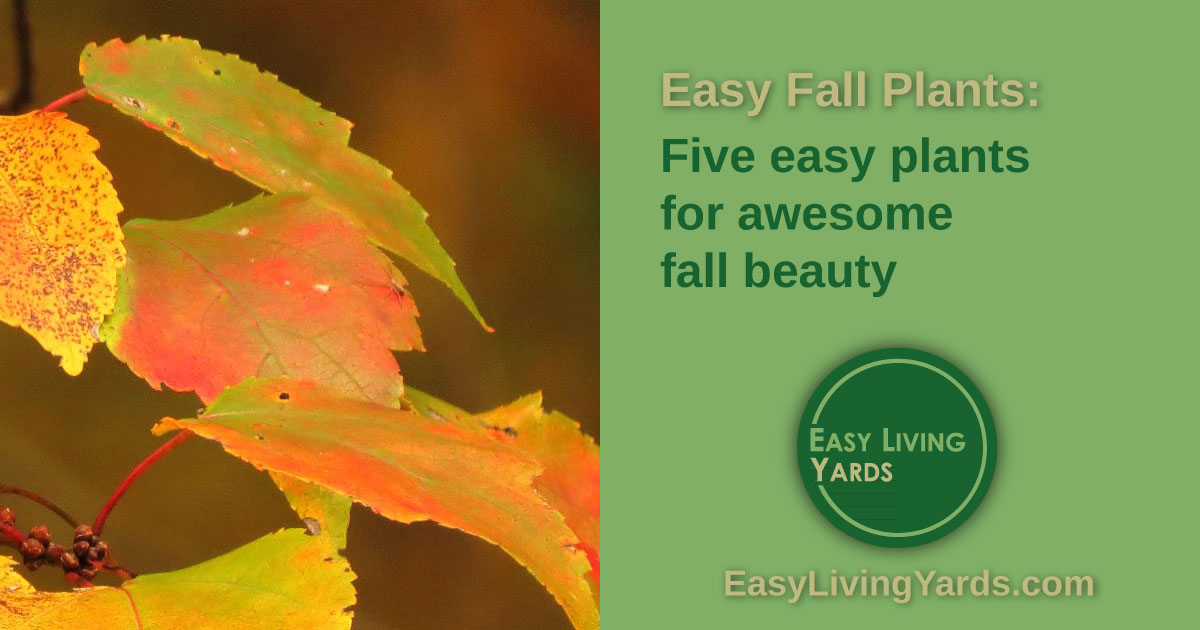
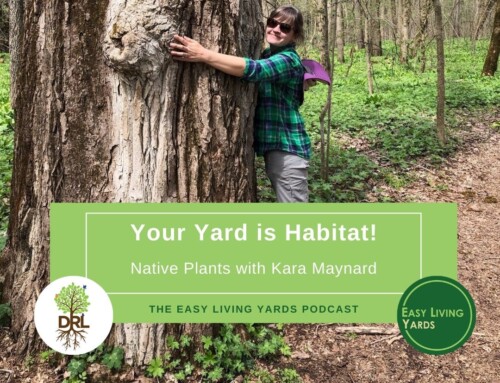
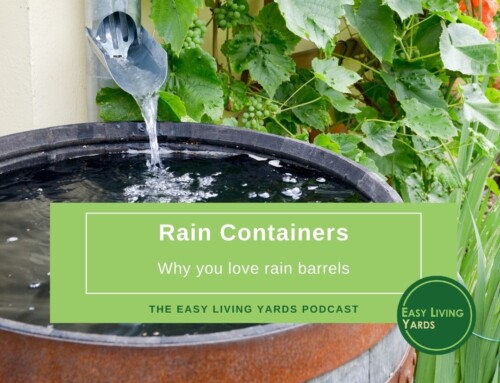
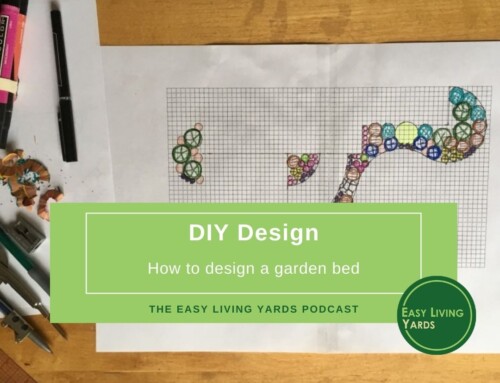

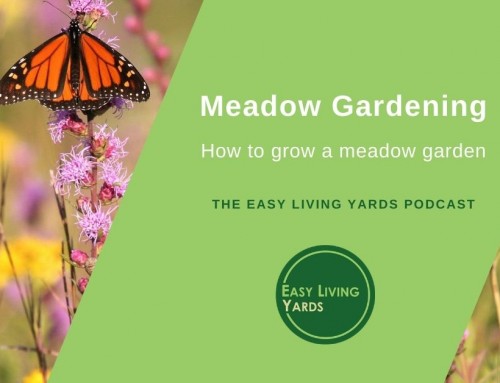
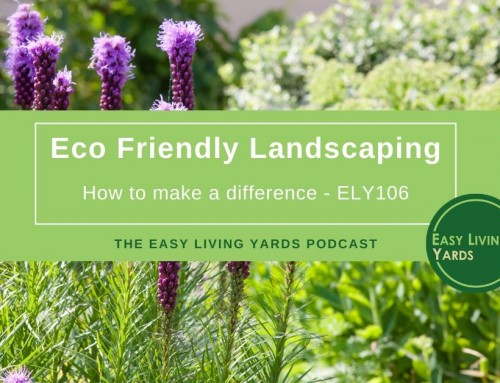
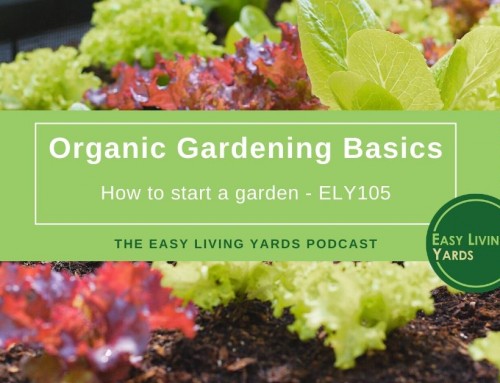
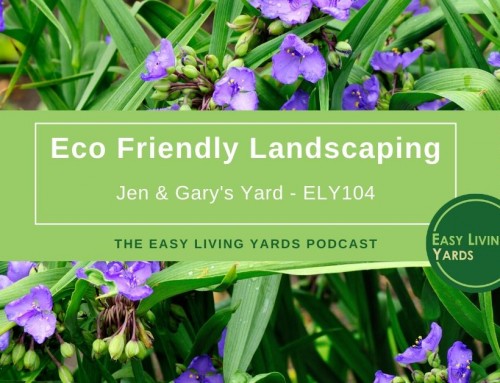

Leave A Comment